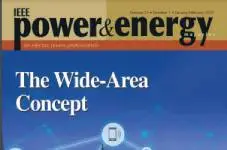Transmission Design and Analysis for Large-Scale Offshore Wind Energy Development
Elpiniki Apostolaki-Iosifidou, Regina McCormack, Willett Kempton, Paul McCoy, and Deniz Ozkan
-
Members: FreePES
IEEE Members: Free
Non-members: FreePages/Slides: 10
10 Apr 2019
The offshore wind resource is very large in many coastal regions, over 80,000 MW capacity in the region studied here. However, the resource cannot be utilized unless distant offshore wind generation can be effectively collected and brought to shore. Based on extensive oceanographic, environmental, and shipping data, a realistic wind energy deployment layout is designed with 160 wind power plants each 500 MW. The power collection and transmission infrastructure required to bring this power to shore and connect it to the electricity grid is designed and analyzed. Three types of connection to shore are compared; high voltage AC to the nearest onshore point of interconnection (POI), high voltage DC with voltage-source converter (HVDC-VSC) to the nearest onshore POI, and connecting to an offshore HVDC backbone running parallel to shore that interconnects multiple wind power plants and multiple POIs ashore. The electrical transmission losses are estimated step by step from the wind turbines to the POI. The results show that such a large system can be built with existing technology in near-load resources, and that losses in the HVDC-VSC systems are approximately 1%-2% lower than that in the AC system for a distance about 120 km from shore.


